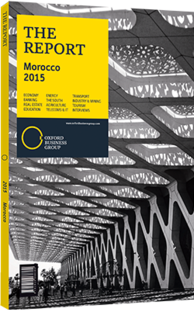Stephen Jenkins, Chairman, Circle Oil: Interview

Interview: Stephen Jenkins
How has the drop in oil prices affected exploration?
STEPHEN JENKINS: The drop in oil prices has had a significant impact on global oil and gas exploration, and Circle Oil is not immune to that. Like all exploration and production companies, we had to review our cost base and our exploration, appraisal and development budgets in light of a much lower and more volatile oil price.
All aspects of our drilling and production programmes are being examined to determine how to achieve the same result for less money. Our focus is on achieving cost efficiencies without sacrificing health, safety and the environment. We remain committed to Morocco and our drilling campaigns in Sebou and Lalla Mimouna, where long-term gas supply contracts continue to sustain prices in line with the local market.
What is the expected cost of exploration and development, and what are the operational challenges?
JENKINS: We will continue to interpret our seismic and other data to determine the best approach for the opportunities in both Sebou and Lalla Mimouna. We have drilling commitments to fulfil, with expenditures in line with our previous campaigns. If all goes well, exploration and development costs are currently anticipated to be in the range of $30m-50m. As Morocco is not a major oil theatre, supplies, hardware and services need to be externally sourced. Managing this supply chain while maintaining cost-effective operations is a challenge we do not have in Egypt or Oman. However, the adaptability and cooperation of local partners and staff helps us address this and ensure a timely outcome.
What were some of the highlights of 2014?
JENKINS: In 2014 we drilled three wells in the Sebou permit, all yielding positive results. While the year’s drilling campaign initially targeted the replacement of depleted reserves, we are now hoping to add to our total reserve base thanks to the successful tests. Although we were forced to plug and abandon the KAB-1bis well – the first well of 2015 – the rig has been moved to the west of the Sebou permit to complete and test the SAH-W1 well. The SAH-W1 well encountered three gas-bearing Guebbas sands, but could not be completed, as a non-standard 4.5-inch liner was needed. It will produce the three zones sequentially from the bottom up, where the pressure is highest.
As the Morocco drilling campaign continues, our top priority is to replace or increase overall reserves, making it possible to incrementally boost production to both existing and new customers in the coming years. The pipeline we built to the Kenitra port area has substantial additional capacity for a future increase in volumes. Consequently, we are very pleased to see that local demand for natural gas remains strong.
How do you assess your government partnership?
JENKINS: Since first partnering with the National Office of Hydrocarbons and Mines (Office National des Hydro-carbures et des Mines, ONHYM) in our Sebou permit, we have maintained a close relationship with them. They do their part to ensure that the country’s hydrocarbon resources are properly and effectively exploited, and their support as a partner covers many aspects of our work. Although we are now adding to the geologic knowledge of the Rharb basin, our first activities were greatly assisted by the geological and production knowledge and support that ONHYM provided.
How unique are Morocco’s oil-bearing structures?
JENKINS: Morocco has a rich variety of geologic basins and ages. Our production in the Rharb basin is from relatively young rocks (5-20m years old). The hydrocarbons are dry gas not oil, so there are no real similarities with Algeria or Mauritania, for instance, where the established onshore hydrocarbons production is from older rocks in basins with a different geologic history.
Actually, our structures are predominantly stratigraphic traps, which are limited by the distribution of porous reservoir rather than by structural shape, although most also have a minor structural component.
You have reached the limit of premium articles you can view for free.
Choose from the options below to purchase print or digital editions of our Reports. You can also purchase a website subscription giving you unlimited access to all of our Reports online for 12 months.
If you have already purchased this Report or have a website subscription, please login to continue.

